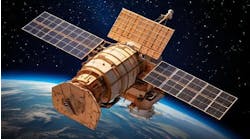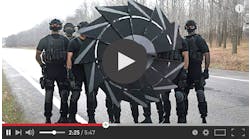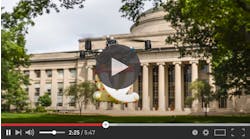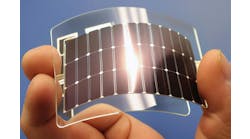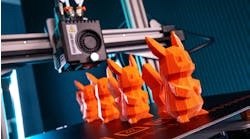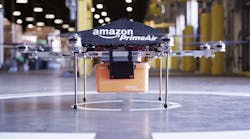Retail giant Amazon.com Inc. has made its first drone delivery to an actual customer, dropping off a Fire TV device and a bag of popcorn to a house in the rural English countryside 13 minutes after receiving an online order.
The delivery occurred Dec. 7 near Cambridge in a zone that U.K. aviation authorities have authorized for drone test flights, according to a tweet Wednesday by company Chief Executive Officer Jeff Bezos and a video documenting the flight.
While the flight was conducted under U.K. restrictions that for now prohibit such deliveries on a widespread basis, it marks a milestone in the race by companies like Amazon and Alphabet Inc. to use unmanned vehicles to transform how customers buy and receive goods. The company is beginning broader delivery trials in an attempt to gather safety data to justify an expansion of the program.
Amazon is making its drone-delivery service available to customers who live within a few miles of a facility it built to test deliveries.
After the Dec. 7 order was received and the items were packaged, the cargo was automatically loaded onto the underside of a quad copter.
The drone then lifted off and flew using the company's automation software for guidance. A human operator was standing by to take over in the event of a failure.
Ground Target
The drone landed with the help of a target placed on the ground to guide the craft's sensors to a safe touchdown zone.
Drones could play a key role in helping Amazon manage costs while quickly delivering online orders. The company has expanded its Prime Now service, which delivers tens of thousands of products commonly found in convenience and drug stores in as little as an hour, to combine the ease of online shopping with the instant gratification of getting goods at a store.
Amazon's proposed use of drones may drive down the cost to deliver small packages crosstown to as little as $1, a fraction of existing same-day delivery options, according to a 2015 study by New York-based ARK Invest that tried to quantify the savings from the use of drones compared with delivery trucks and couriers.
In the U.S., Amazon faces competition from startups like Flirtey, which in July made its own household delivery via drone from a 7-Eleven Inc. store in Reno, Nevada. Flirtey co-founder and CEO Matt Sweeny envisions customers paying a fee of about $10 for the convenience of quick drone delivery, and is experimenting with the convenience store chain on delivering over-the-counter medication, which could appeal to parents of sick children.
Project Wing, a unit of Alphabet, which also owns Google, experimented with dropping off burritos to students and other test subjects last September at Virginia Tech in Blacksburg, Virginia.
All these tests were effectively simulations of how deliveries would work and not the fully automated robotic flights the companies hope will eventually become routine.
While routine commercial drones' flights have been approved in the U.S., they're not allowed over people and must stay within sight of an operator on the ground. Until companies can prove to the Federal Aviation Administration and other regulators around the world that radio links, collision-avoidance technology and guidance systems are reliable and safe, widespread deliveries won't be feasible.
by Alan Levin and Spencer Soper, Bloomberg
